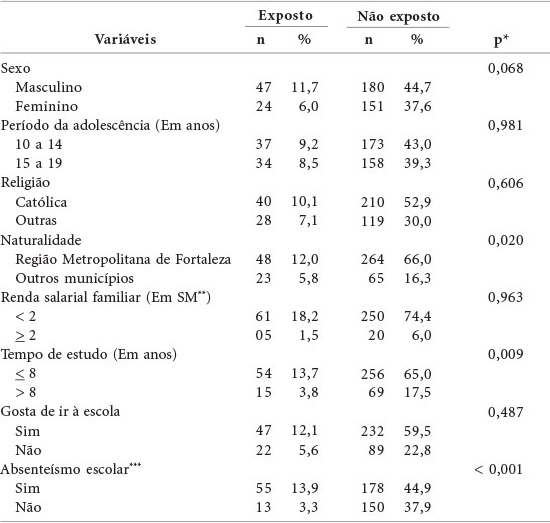This a cross-sectional study made in Fortaleza, Ceará, 2009, which included 458 teenagers and analyzed their exposure to violence, describing their access to weapons, alcohol abuse, illegal drug use and their self-esteem by investigating their socio-economic, school and family characteristics and exposure to the phenomenon. A questionnaire and/or structured interviews were used for data collection, and analysis involved Pearson's chi-square test, with 95% reliability. Of the 458 participants, 17.7% were considered to be exposed to criminal violence. Significant variables for exposure to violence included: place of birth (p = 0.020), years of schooling (p = 0,009), school absenteeism (p < 0.001), the father as the head of the family (p = 0.026), alcohol-addicted parents (p < 0.001), good/very good family relationships (p = 0.009), and parents' dissatisfaction with their children's friends (p < 0.001). Thus, it is necessary that public policies focus on a support network for care of adolescents and that urban centers organize themselves socially and politically in the quest for understanding the effects of exposure to violence among adolescents in low-income communities.
Adolescence; Violence; Risk factors; Family characteristics; Cross-sectional studies; Social condition




